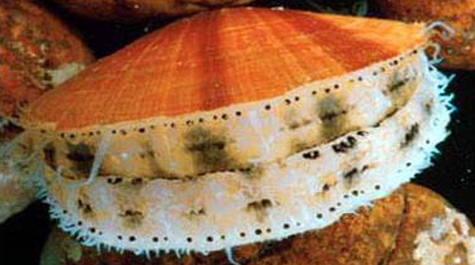
Sea scallop
The Atlantic sea scallop Placopecten magellanicus. Each of the dark spots is an eye. Photo by Dann Blackwood.
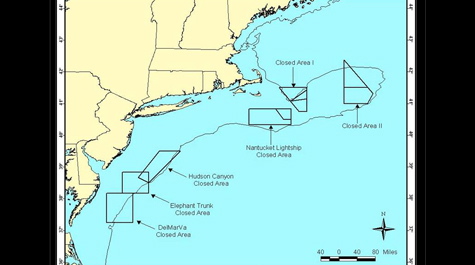
Closed Areas
Map of closed areas along the northeast Atlantic continental shelf.
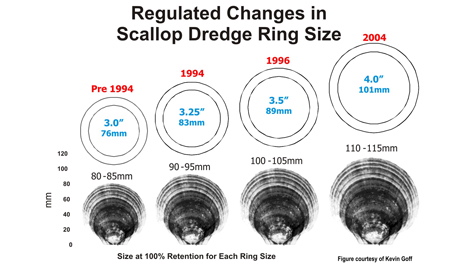
Dredge Ring Size
Field trials by VIMS scientists have led to an increase in the ring size of scallop dredges. The larger rings allow smaller scallops to escape, thus leading to increased yield and a sustainable fishery.
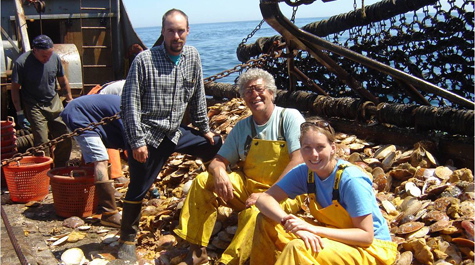
VIMS Scallop Team
Dr. Bill DuPaul (C) with graduate students David Rudders (L) and Noelle Yochum (R) aboard a commercial scallop boat during a 2005 monitoring survey.
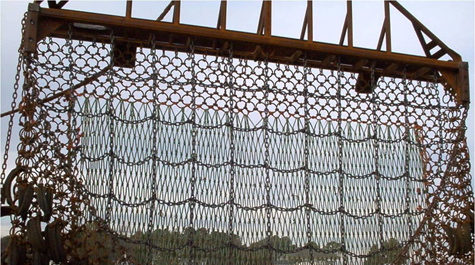
Sea Scallop Dredge
VIMS research has led to modifications in the size of dredge rings, mesh openings, and other dredge components. These changes promote a sustainable scallop fishery and minimize by-catch of fish and sea turtles.
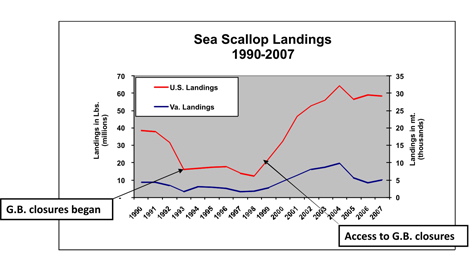
Scallop Landings
Sea scallop landings have reached healthy and sustainable levels following establishment of a system of rotating closed areas in 1994. G.B. refers to Georges Bank.
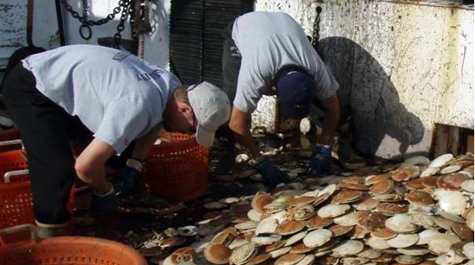
Sorting Scallops
Commercial scallopers sort their catch after a dredge tow.
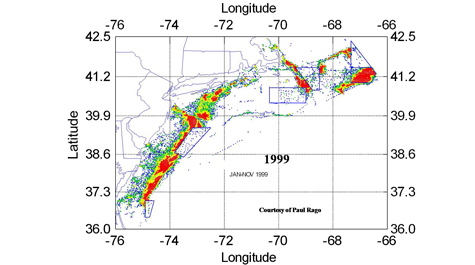
Enforcing Closed Areas
GPS transmitters aboard commercial scallop vessels allow fishery managers to monitor and enforce compliance with closed areas. Warmer tones show increased fishing activity. Notice how the closed areas (rectangular boxes) are largely vessel-free. Figure courtesy of Dr. Paul Rago NMFS, NEFSC.